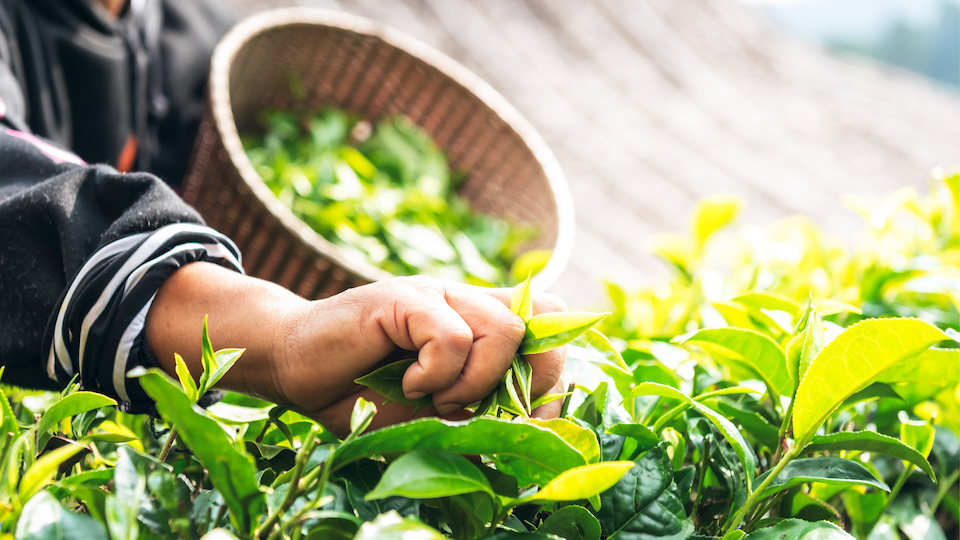Tea is up there at the top of the list of favorite beverages, and for a good reason. It comes in so many different varieties and flavors and can be brewed light or strong to match any mood. Moreover, the presence of several antioxidant compounds in tea has now given it a super drink status.
Teas may be known by different names such as green tea, oolong tea, black tea, etc., but all real teas come from the Camellia sinensis plant. It is a small, broadleaf evergreen tree, usually grown as a shrub for ease of harvesting. Unlike other two popular beverages, coffee and chocolate, tea is made from leaves, not beans.
China is considered the home of the tea plant, but it’s widely cultivated in many parts of Southeast Asia and the Indian subcontinent as well as other tropical and temperate areas across the world.
In the mild climates where tea plants naturally grow, the tender leaves are picked regularly, once every 2-3 weeks, round the year. In other words, if you grow a few tea bushes, you can pick tea leaves whenever you want.
Growing your own tea bushes
In USDA Zones 7-10 Camellia sinensis plant can be successfully grown in the garden with some protection from frosts and extreme heat. Since it is a shade-tolerant plant, it is a good candidate for growing indoors, too, preferably in a greenhouse or sunroom, if possible.
Tea plants like a rich soil with plenty of water. At the same time, they don’t like their roots standing in water, so good drainage is essential. Tea bushes are traditionally cultivated on hills or slopes to ensure excellent drainage.
Rows or hedges?
Tea bushes are usually planted in rows and maintained at waist height so that they’re accessible for plucking the leaves. In a home garden, you have the option of growing the bushes as a low hedge or thick border around other plantings. The shiny dark green of older leaves and the light green color of the young growing tips can be a great backdrop for your ornamentals.
Planting tea bushes
If you can get mature seedlings, look for the hardier Chinese variety Camellia sinensis-sinensis. There’s an Assamese tea variety, but it’s more suited to tropical areas. You can also grow your own seedlings from tea seeds if you prefer.
Soak the seeds for 2 days to improve the germination rate. Plant in individual seedling cups filled with sterile sand or vermiculite. Keep in a warm place and make sure that the soil doesn’t dry out. The seeds may take up to 8 weeks to germinate. Transfer to pots when the seedlings have 4-6 leaves. Use a slightly acidic potting mix of pH 6 – 6.5 and deep pots to accommodate the long tap root of the tea plant.
Spring and fall are the best times to plant the seedlings. Plant in deep trenches filled with a mixture of good quality compost and sand. Treat them as tree saplings until they are two years old. Then hard prune them to promote lateral branching. Maintain the bush at 3 feet high 2-3 feet wide with regular light pruning.
Harvesting tea leaves
Your tea bushes will be ready for harvest in about 3 years. The tea leaves develop their full caffeine content on processing. The tender leaves of tea contain higher amounts of substances that promote caffeine synthesis, hence they are plucked young. Tips of young branches, usually a leaf bud with two leaves, are pinched off each time. This will also promote more branching.
Make white tea
Young leaf buds that have not been fully opened are used to make this unfermented tea. Since it is the least processed of all teas, it’s believed to have the highest antioxidant content, while having the least amount of caffeine. Snip off spring buds, steam them for 2 minutes, and dry in the shade to make your own white tea.
Green tea is made from more mature leaves, which are allowed to wither for a few hours before steaming and then drying in the oven. Oolong and black teas undergo a longer process which involves bruising, fermenting, and curing.
Herbal teas
While tea is often brewed with lemongrass, ginger, mint or jasmine for extra flavor, several other herbs have been traditionally used on their own to make teas that are refreshing, soothing or restorative. They are also perfect additions to your tea garden.
Ginger, Galangal – Grow in the garden in warm areas and in tubs in other places. The underground stems may be used fresh or dried, to make herbal tea or to add flavor to regular tea.
Chamomile, Echinacea, Lavender – Grow in patches for their decorative effect as well as utility. Steep fresh or dried flowers in boiling water for about ten minutes to make teas or tisanes.
Peppermint, Spearmint, Lemon balm – Grow in containers to prevent them from overtaking the garden.
Licorice, Stevia – Grow these to add sweet flavor and taste to teas. Licorice roots and stevia leaves can be dried and stored for use.
Happy growing,
Susan Patterson, CBHC and Master Gardener




